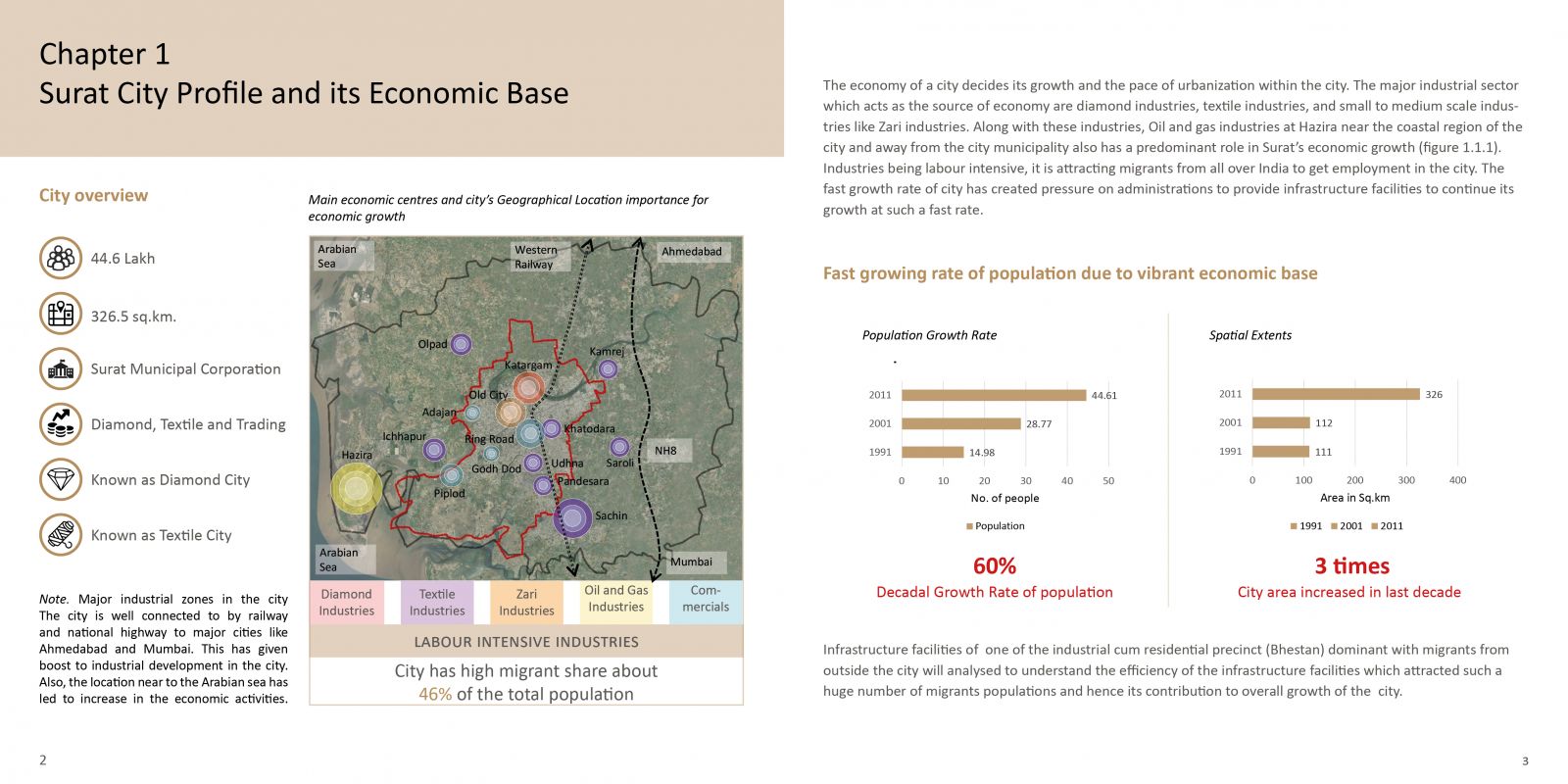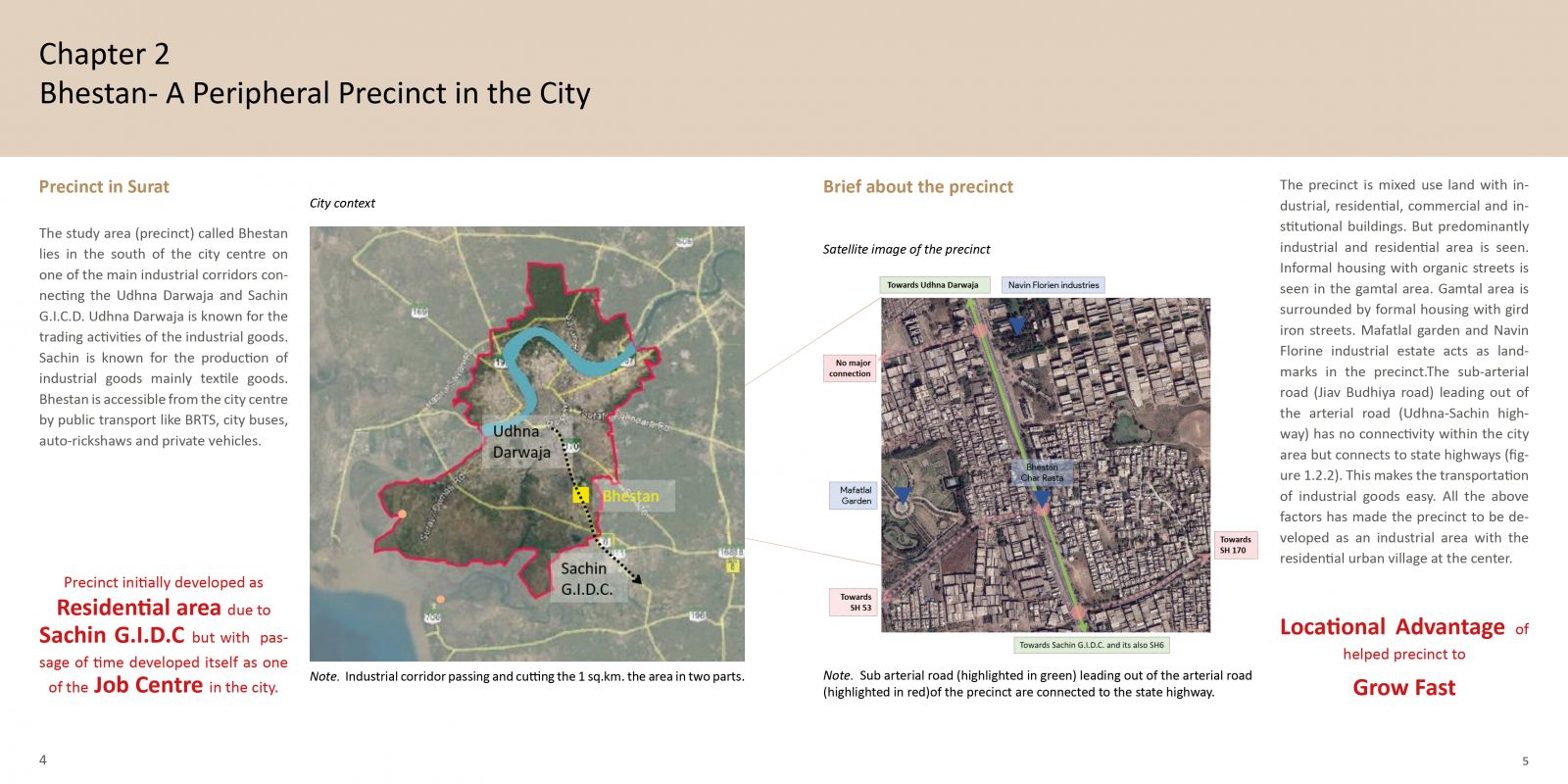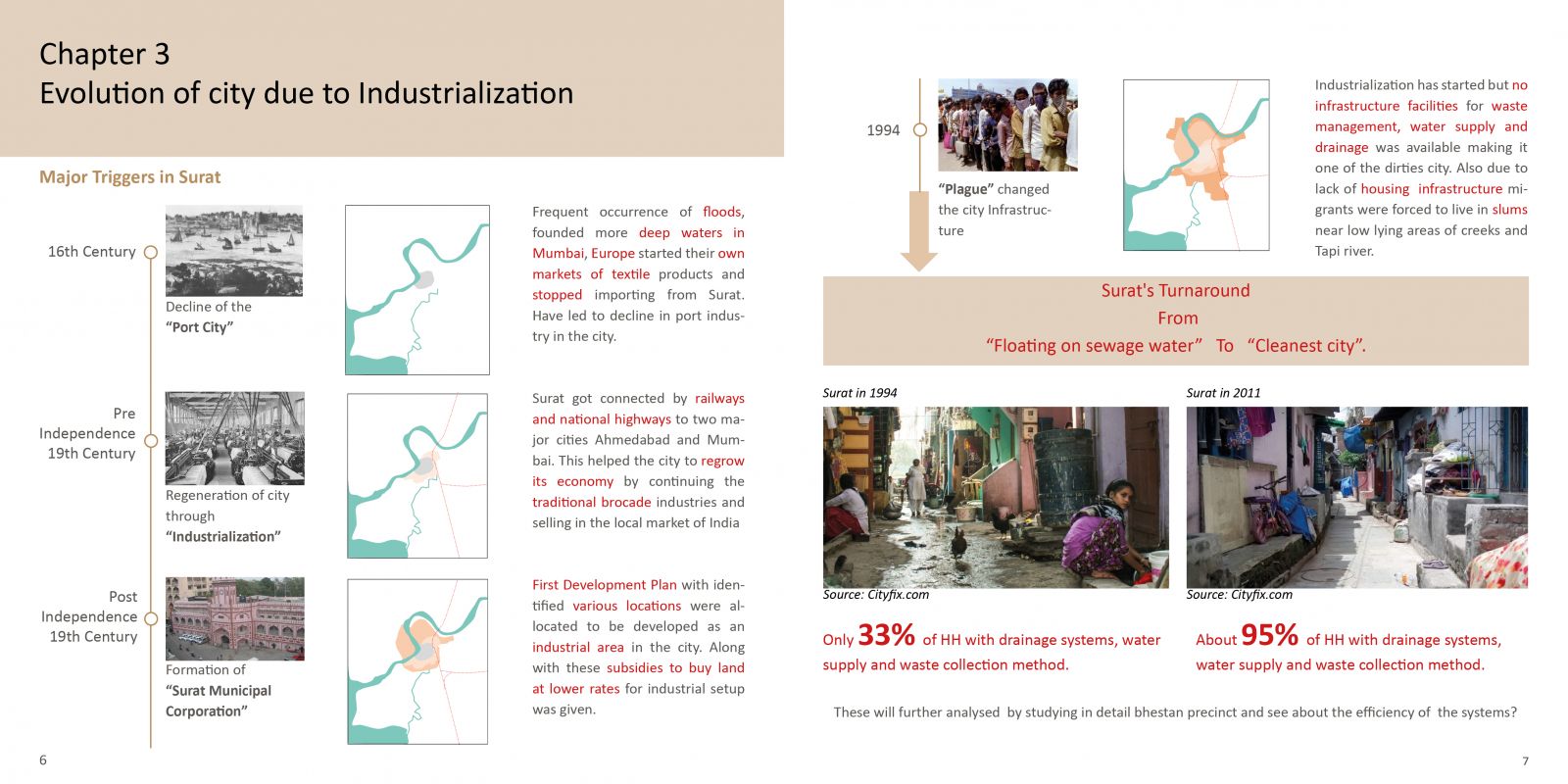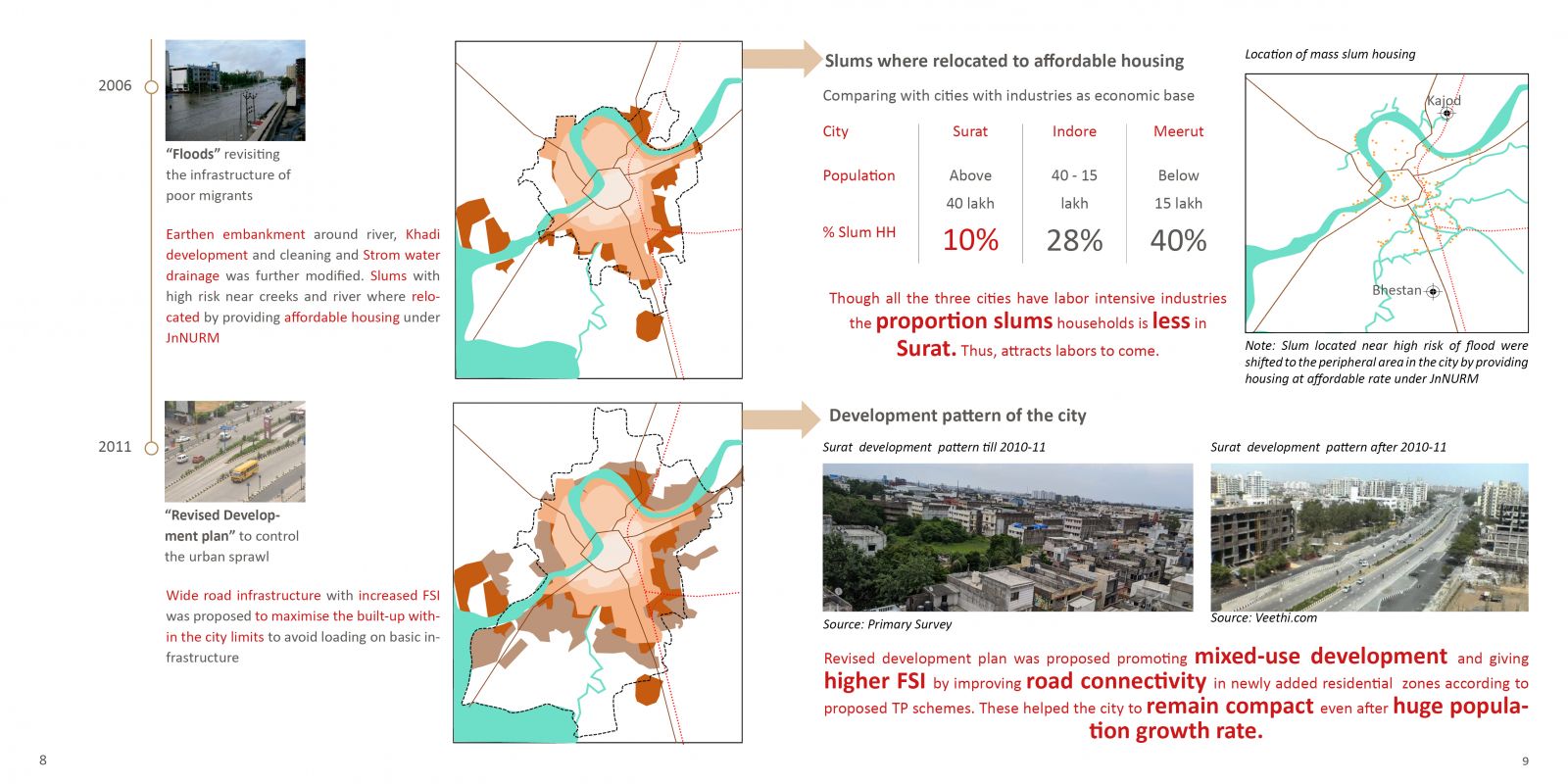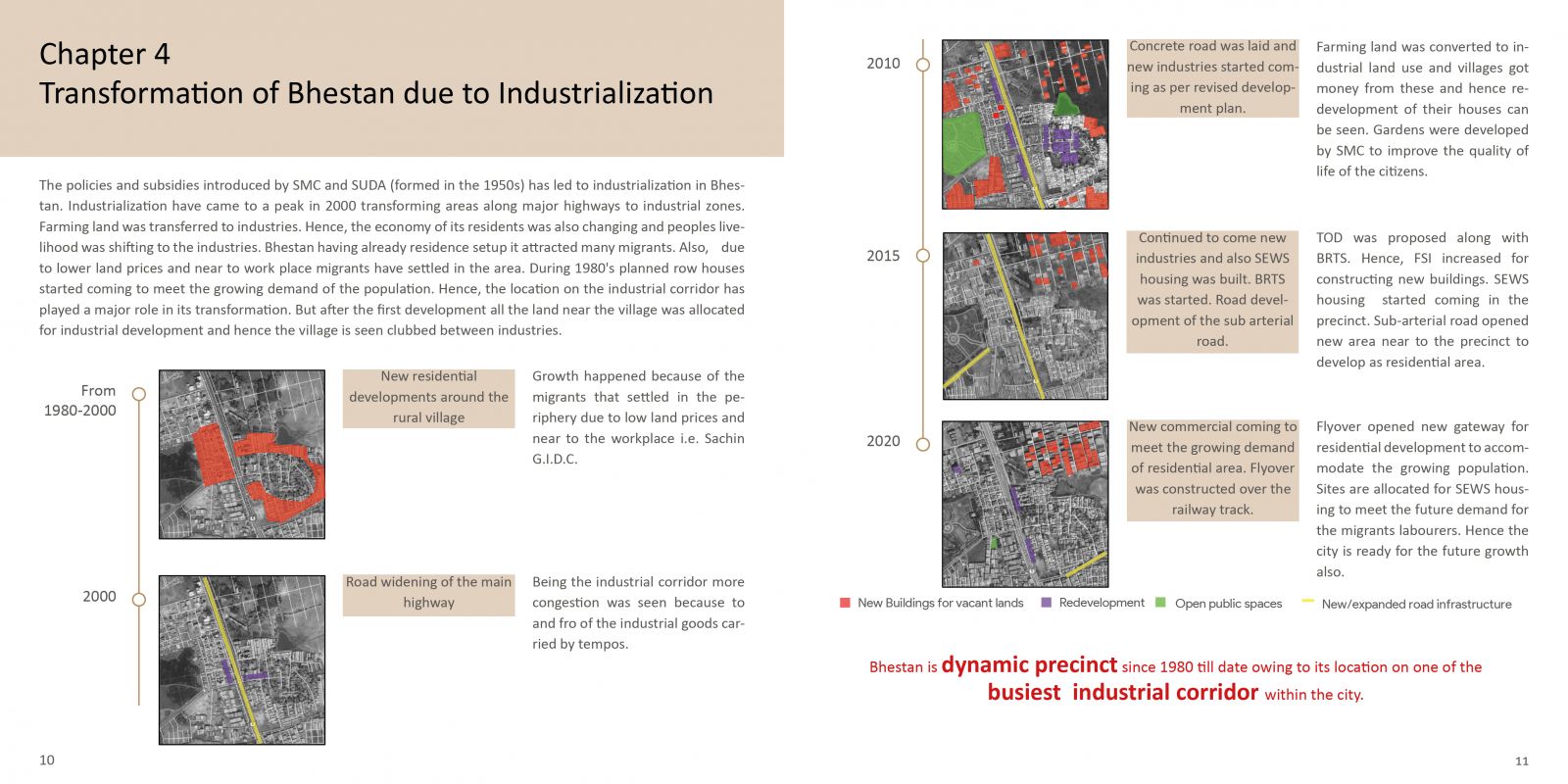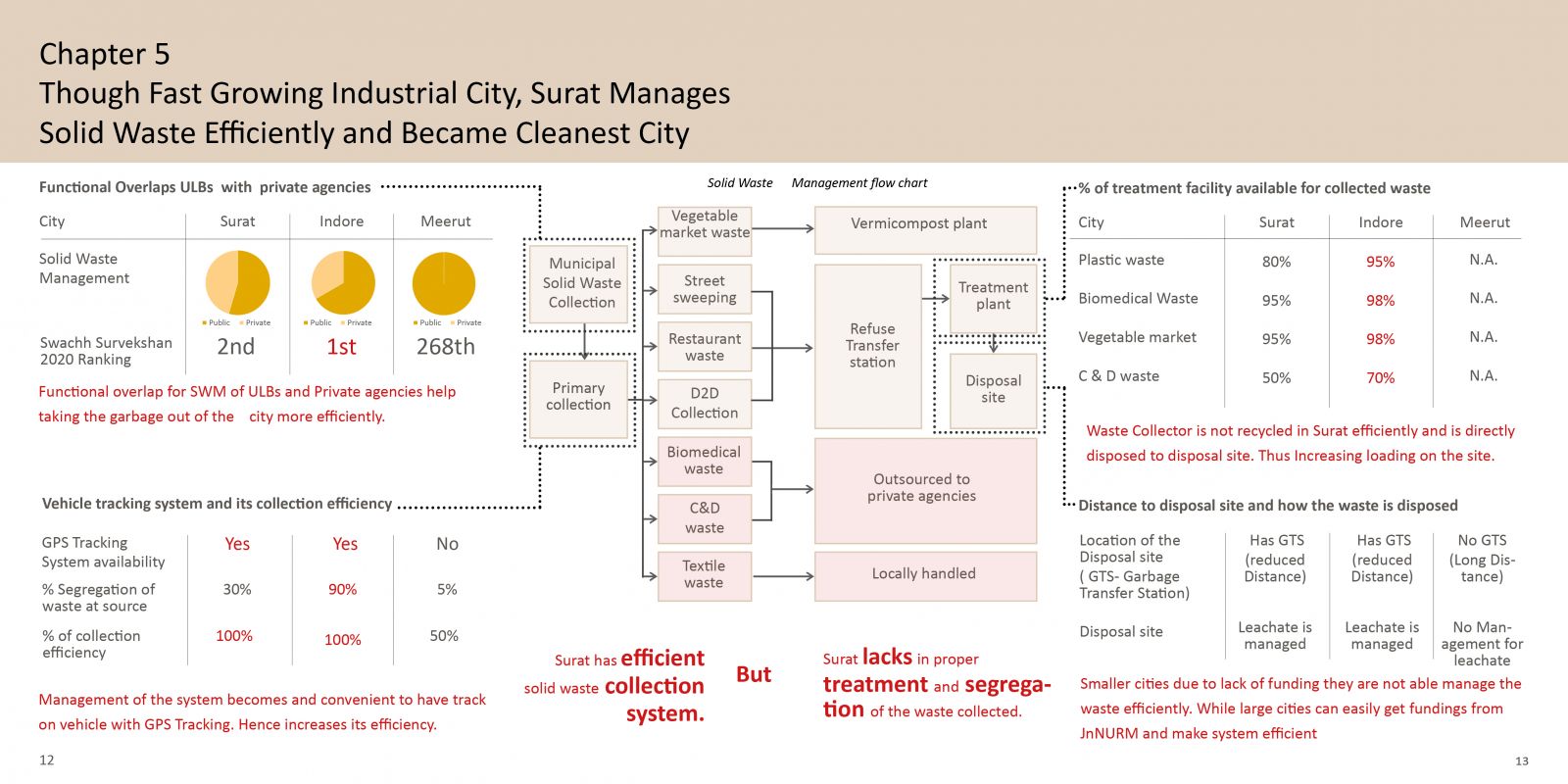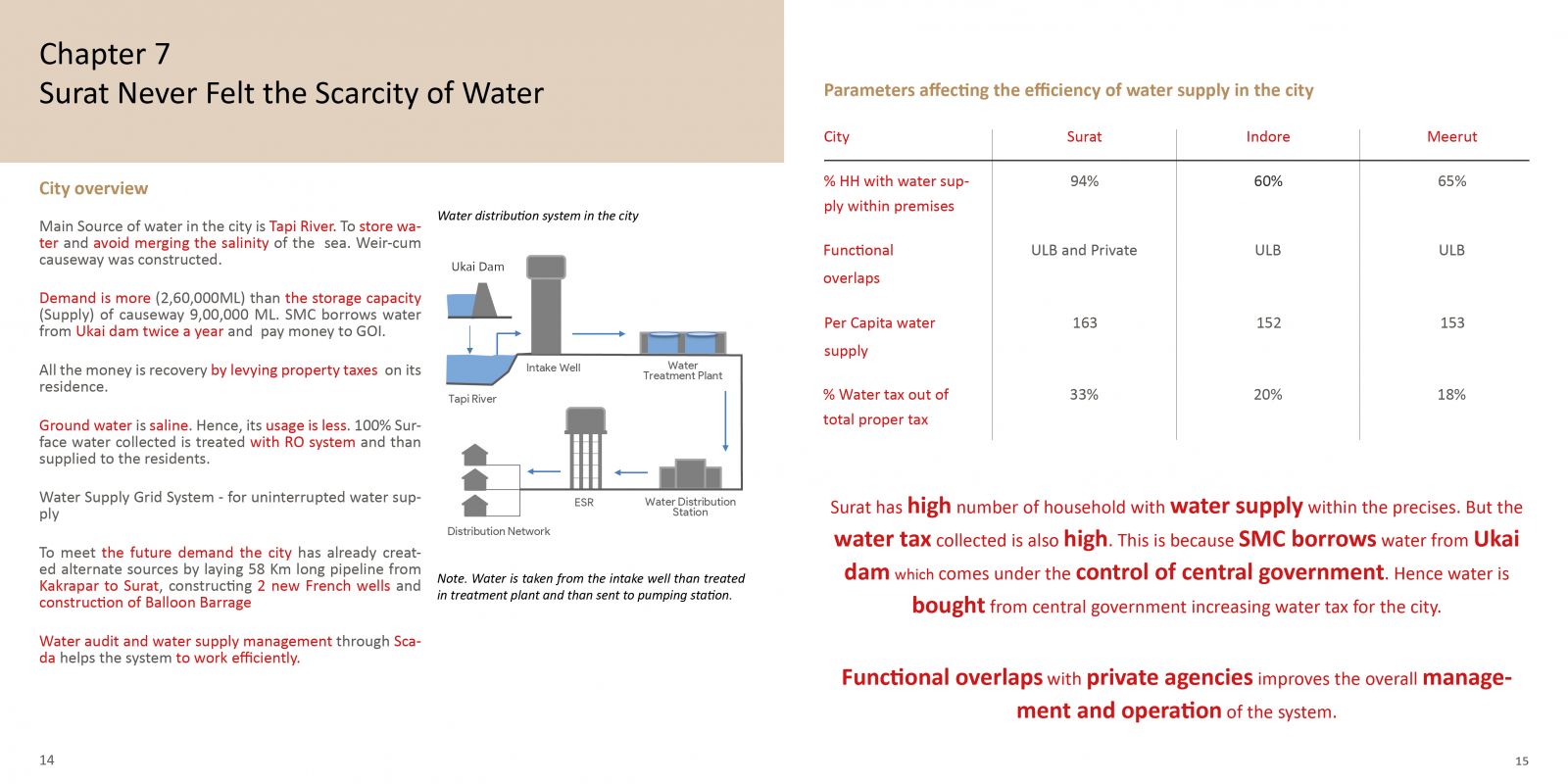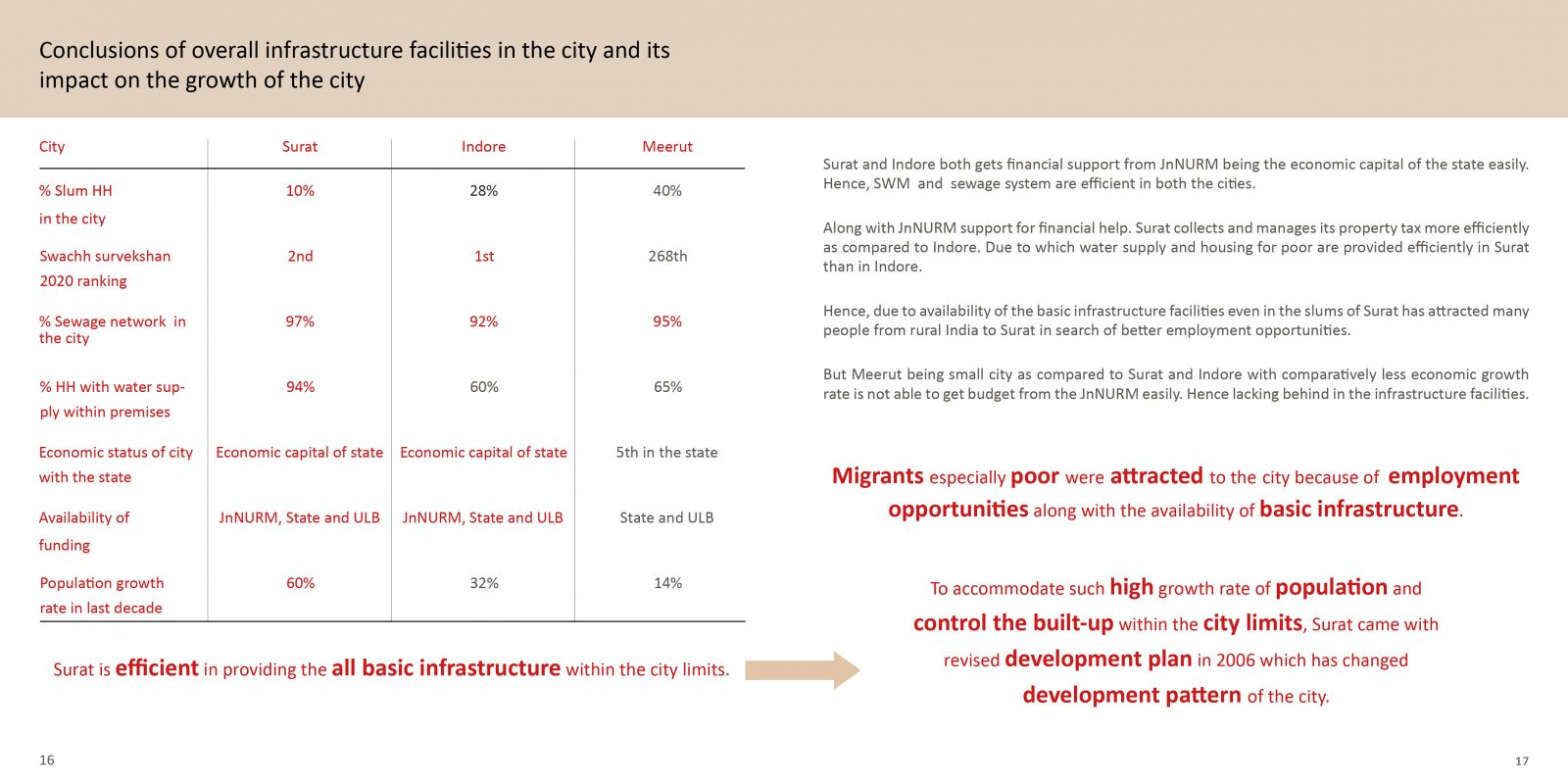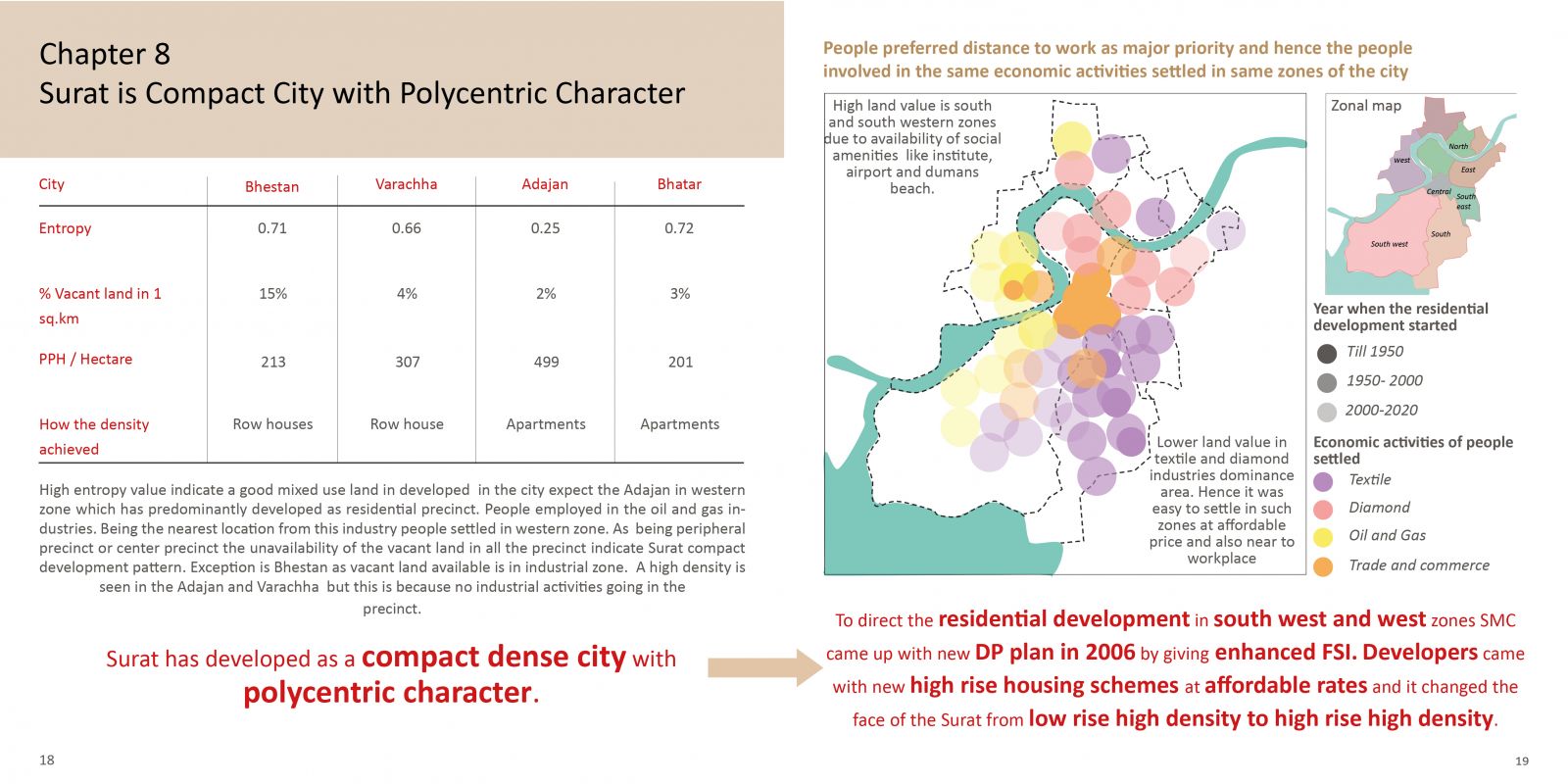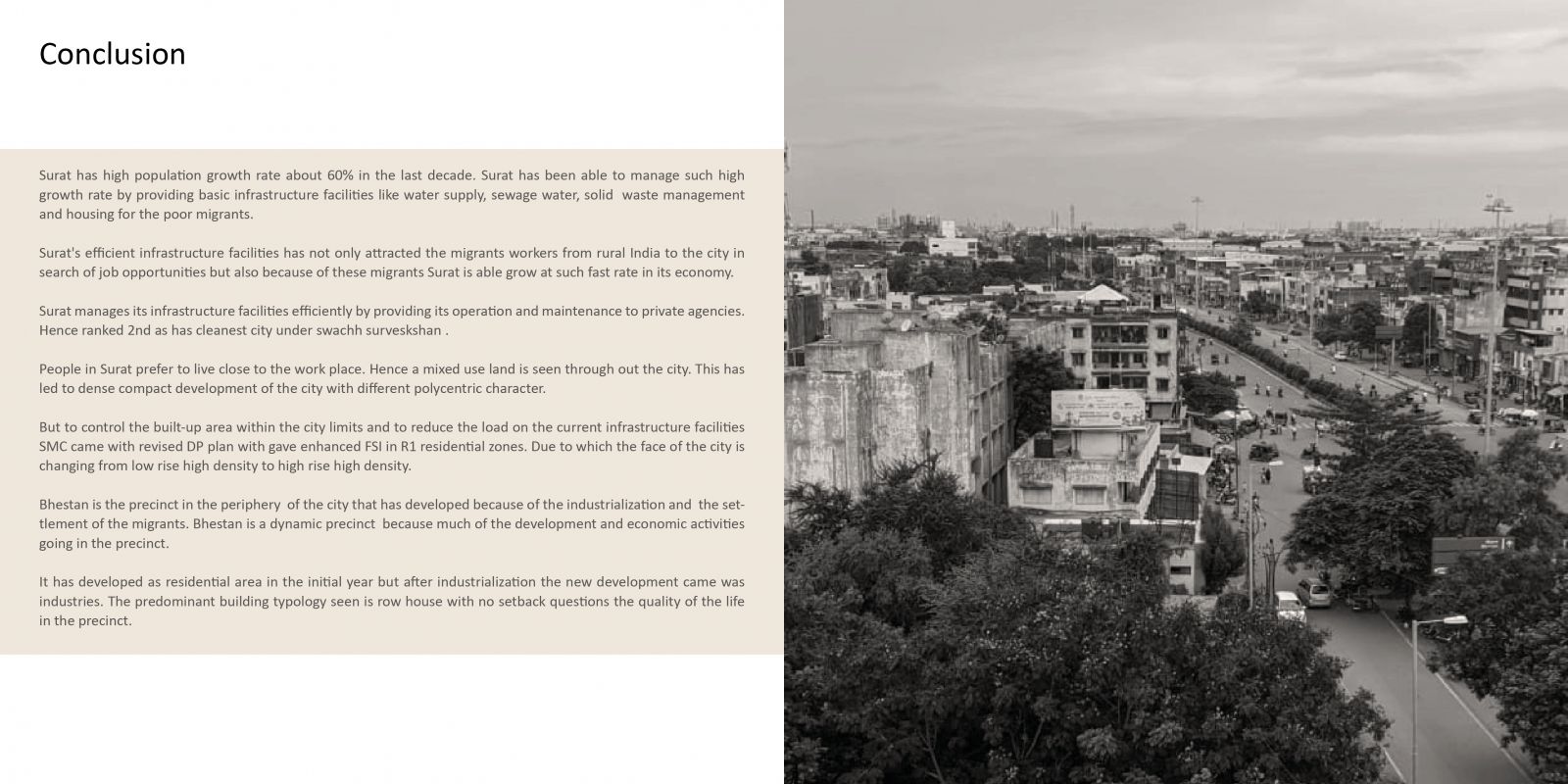Bhestan: A Dense Compact Urban Fringe
- Student PATIL KAVITA VISHWANATH
- Code PUT20166
- Faculty Planning
- Tutor/s Rutul Joshi,Umesh Shurpali,Ravi Sannabhadti,Anil kumar Roy,Subhrangsu Goswami,Nitika Bhakuni,Vanishree Herlekar,Rujul Dipak joshi,Arjun Joshi,Tarun Patel,Narendra Mangwani
- TA Kinjal Ribadia,Aarzoo Samani,Jacob Baby,Navnit Sourirajan,Anuja Singh,Giby Abraham,Ann Elizabeth Francis,Kaveri Bahure,Nikita Doshi,Shreesha Arondekar,Shuktika Sabharwal
The study focuses on the development and evolution of the city by analyzing one square km of Bhestan. Bhestan lies in the south of the city center and on the peripheral boundary of the city. Industries act as the economic base for the city and have attracted migrants to the city in search of employment opportunities. Bhestan being one of the precincts has developed fast because of its location on one of the industrial corridors in the city. Hence dominance of the migrants can be seen in the precinct. The migrants were attracted to precincts as well as the city due to the availability of basic infrastructure facilities like water supply, sewage, solid waste management, and housing for the urban poor. Surat has been able to provide the facilities efficiently in all zones within the city limits. The infrastructure provision is studied in the Bhestan due to its location in the urban fringe. In comparison with other precincts in the city, a mixed-use development pattern can be seen throughout the city despite its location in the center or periphery. Hence people prefer to live close to their workplace and the trip length in the city are shorter. This has increased the dominance of the two-wheeler in the city. Surat has developed as a compact dense city with a polycentric character.
